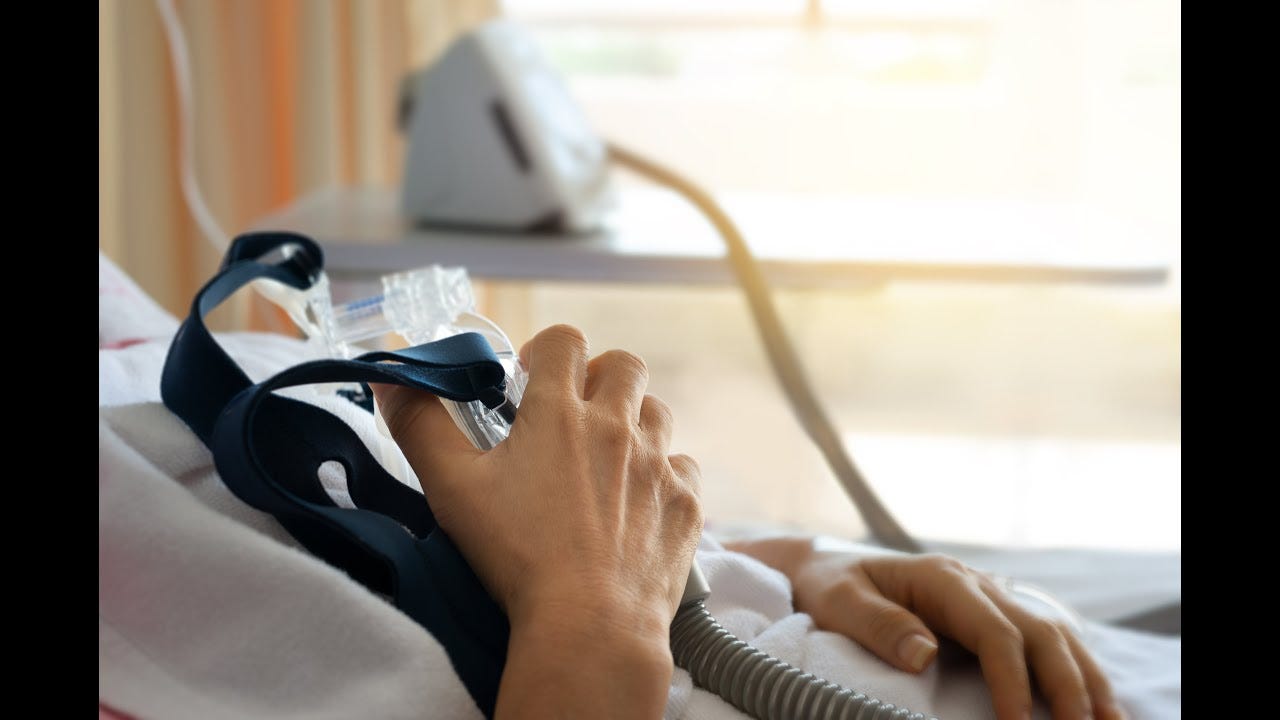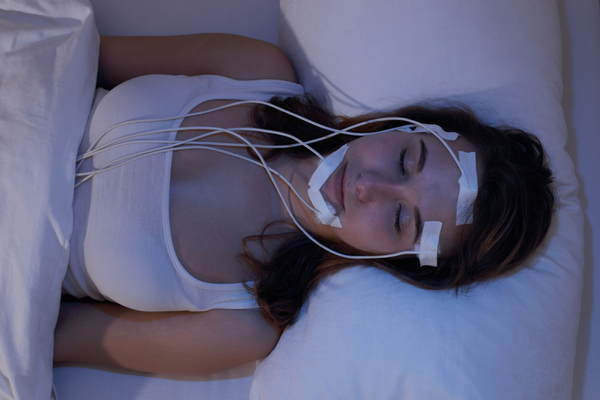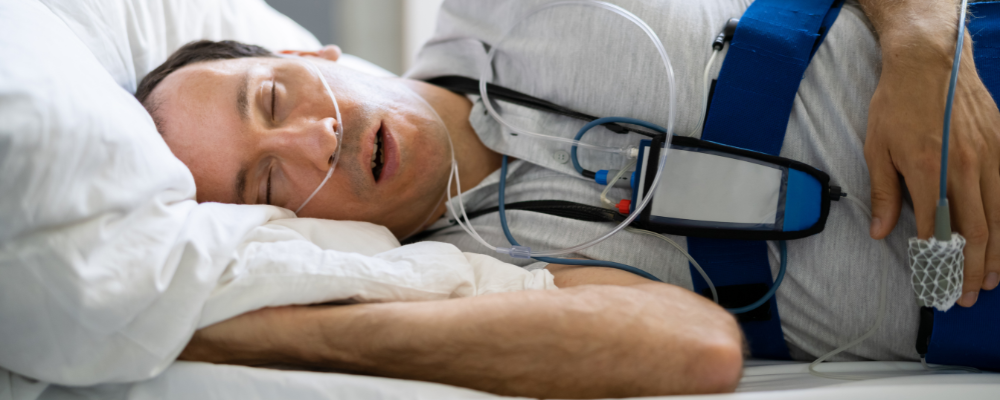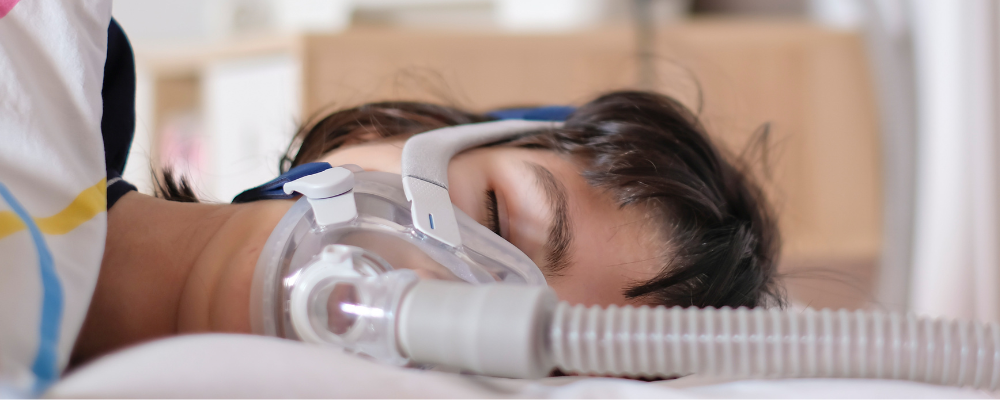Snoring can be a major annoyance if your bed partner is afflicted with it. What’s worse; if that snoring is a symptom of sleep apnea, it could be potentially life-threatening. Heart disease is the leading cause of death in the United States, and there is strong evidence that sleep apnea and heart disease, hypertension, and even heart failure are related. Thankfully, the elevated risks associated with sleep-disordered breathing are preventable with simple, non-invasive treatment; available to you through insurance with Aeroflow Sleep.
IN THIS ARTICLE:
How Does Sleep Apnea Affect The Heart?
Our Advice: Treat Your Sleep Apnea
CPAP SUPPLIES THROUGH INSURANCE:
Aeroflow Sleep is in-network with most primary insurance companies and is accreditted by Medicare and Medicaid. Complete our Qualify Through Insurance Form, and we will automatically check to see if your plan covers CPAP supplies; including a machine, mask, and accessories. ***Must have a sleep study to qualify.***
You will also receive the care and attention every sleep apnea patient deserves; one-on-one clinical support in-home or via telehealth, a dedicated Sleep Specialist you can contact during business hours, and a user-friendly online portal with tailored replacement schedule, important updates and notifications, and educational resources.
Let us take the headache out of healthcare. Join the Aeroflow Sleep family today! It only takes 5-7 minutes to get started.
What Is Sleep Apnea?
When people talk about sleep apnea, they are usually talking about a condition called Obstructive Sleep Apnea (OSA). There are other kinds of sleep apnea, but OSA is by far the most common. In fact, one in five adults—or almost 22 million Americans—suffers from OSA, which occurs when the muscles of the upper airway lose rigidity during sleep, collapsing and causing the flow of air to be reduced or stopped altogether.
The resulting lack of oxygen causes the body to struggle to resume breathing, preventing restful sleep and putting a strain on the heart and lungs. An ‘apnea’ is defined as an event where breathing is completely stopped for 10 seconds or longer. When airflow is simply reduced during this period, it is known as ‘hypopnea.’
In OSA, these pauses in breathing may occur between 5 and 30 times per hour, or more. Another, rarer form of sleep apnea is called Central Sleep Apnea (CSA). With CSA, the brain fails to send regular signals to the diaphragm, causing periodic interruption of breathing during sleep. The signs and symptoms of CSA may differ from those of OSA, and yet both affect the heart.
How Does Sleep Apnea Affect The Heart?
When your breathing rate drops, your oxygen levels follow, causing your body to release stress hormones as you struggle to regain air. In turn, these elevated levels of stress hormones lead to an increase in blood pressure. This spike in blood pressure can last for hours and can contribute to hypertension, stroke, and even heart failure.
Tachycardia—a heart rate over 100 beats per minute—is another way sleep apnea affects the heart. Typically, your resting heart rate is a low heart rate while you’re sleeping, but, research shows that “heightened sympathetic activity plays a role in the cardiovascular sequelae of obstructive sleep apnoea (OSA). [A] higher power was documented hourly in OSA,” indicating that OSA is linked to a high heart rate.

Another study suggests that OSA may create a hypercoagulable state—a condition wherein your blood can begin to clot while moving through the body. This is especially dangerous for those with certain vascular diseases; like coronary artery disease or varicose veins. Further, a lack of restorative sleep contributes to insulin resistance and obesity; factors that can exacerbate cardiovascular diseases.
Can You Die From Sleep Apnea?
While the evidence does not seem to show that you can die from Obstructive Sleep Apnea itself, your risk of death from all causes increases with untreated OSA. One study from the National Heart, Lung, and Blood Institute (NHLBI) indicated that the risk of sudden cardiac death nearly doubles for those with severe sleep apnea:
“Your risk of sudden death increases almost twofold, particularly if you stopped breathing more than 20 times per hour of sleep and if you had severe falls in oxygen saturation during sleep,” according to Virend Somers, author of said study and cardiologist at the Mayo Clinic.
Signs Of Sleep Apnea
There are many factors associated with a higher risk of sleep apnea; including being overweight (a BMI of 25 or higher,) large neck size (a circumference of 17 inches or greater in men, or 16 inches or greater in women,) and use of alcohol or cigarettes. The most common symptoms associated with sleep apnea are:
- Snoring
- Pauses in breathing while sleeping (as witnessed by another person)
- Sudden awakening accompanied by shortness of breath
- Excessive daytime drowsiness
- Inability to concentrate
- Awakening with a headache
- Sore throat
We opened with how snoring is extremely common among those with Obstructive Sleep Apnea, but not everyone who snores will have OSA and not everyone with OSA will snore. The presence of these symptoms is not enough by itself to diagnose sleep apnea; however if you experience a combination of these signs, it is highly recommended that you discuss them with your healthcare provider in case you do.
Sleep Apnea Diagnosis
The first step in diagnosing the occurrence of sleep apnea should always be to talk about your concerns with your doctor. Your physician will likely make a referral for a sleep study, or polysomnogram. Polysomnography records your heart rate and breathing, as well as your brain waves, oxygen level, and body movement. Technicians will monitor the frequency and severity of apneas and/or hypopneas during your sleep to determine the diagnosis of a sleep disorder.
This is most commonly done in a professional sleep clinic; however, your physician may recommend an in-home sleep study. Whether you’ve opted for a sleep lab or a home study, the results of your test will need to be reviewed by a board-certified sleep physician to properly recommend treatment.


Sleep Apnea Therapy
While lifestyle adjustments—such as exercise and weight loss—can help alleviate OSA symptoms, the most effective and most common treatment is the use of a CPAP machine. This is a non-invasive device that provides a continuous flow of pressurized air through a mask worn over your nose or mouth. This air pressure works to keep your breathing passages open and prevent apneas during sleep. The strength of the pressure, as well as the type of CPAP machine, will be prescribed by a healthcare professional based on the results of your sleep study.
In addition to a better night’s sleep, CPAP therapy may also reduce the risk of heart disease. A study published this year found that using CPAP reduces the risk of atrial fibrillation in OSA patients. Simply put, your CPAP machine may reduce your risk of heart disease, hypertension, and even heart failure.
Our Advice: Treat Your Sleep Apnea
Now you know, OSA can pose a serious risk to your heart health if left untreated. However, with proper management—including CPAP therapy—these increased risks can be significantly reduced. If you believe that you may be at risk for OSA, or are experiencing any of the associated symptoms, talk to your healthcare provider right away. Then, call Aeroflow Sleep to get your CPAP machine, mask, and accessories covered up to 100% through insurance at 1-800-480-5491. Or, sign up below!
References
Franklin KA, Lindberg E. Obstructive sleep apnea is a common disorder in the population-a review on the epidemiology of sleep apnea. J Thorac Dis. 2015 Aug;7(8):1311-22. doi: 10.3978/j.issn.2072-1439.2015.06.11. PMID: 26380759; PMCID: PMC4561280.
Motamedi KK, McClary AC, Amedee RG. Obstructive sleep apnea: a growing problem. Ochsner J. 2009 Fall;9(3):149-53. PMID: 21603432; PMCID: PMC3096276.
“Understanding The Results.” Apnea, Division of Sleep Medicine at Harvard Medical School, 11 Feb. 2011, https://healthysleep.med.harvard.edu/sleep-apnea/diagnosing-osa/understanding-results.
Pack AI, Platt AB, Pien GW. Does untreated obstructive sleep apnea lead to death? A commentary on Young et al. Sleep 2008;31:1071-8 and Marshall et al. Sleep 2008;31:1079-85. Sleep. 2008 Aug;31(8):1067-8. PMID: 18714776; PMCID: PMC2542950.
mayonewsreleases. “Is There a Thermostat That Switches from Heat to Cool Automatically? (Explained).” News Network, Mayo Clinic, 12 June 2013, https://newsnetwork.mayoclinic.org/discussion/obstructive-sleep-apnea-raises-risk-of-sudden-cardiac-death-mayo-clinic-finds/.
Nieto FJ, Young TB, Lind BK, Shahar E, Samet JM, Redline S, D'Agostino RB, Newman AB, Lebowitz MD, Pickering TG. Association of sleep-disordered breathing, sleep apnea, and hypertension in a large community-based study. Sleep Heart Health Study. JAMA. 2000 Apr 12;283(14):1829-36. doi: 10.1001/jama.283.14.1829. Erratum in: JAMA 2002 Oct 23-30;288(16):1985. PMID: 10770144.
von Känel R, Dimsdale JE. Hemostatic alterations in patients with obstructive sleep apnea and the implications for cardiovascular disease. Chest. 2003 Nov;124(5):1956-67. doi: 10.1378/chest.124.5.1956. PMID: 14605073.
Torborg, Liza. “Mayo Clinic Q and A: Neck Size One Risk Factor for Obstructive Sleep Apnea.” News Network, Mayo Clinic, 20 June 2015, https://newsnetwork.mayoclinic.org/discussion/mayo-clinic-q-and-a-neck-size-one-risk-factor-for-obstructive-sleep-apnea/.
Rundo JV, Downey R 3rd. Polysomnography. Handb Clin Neurol. 2019;160:381-392. doi: 10.1016/B978-0-444-64032-1.00025-4. PMID: 31277862.
Zhu K, Chemla D, Roisman G, Mao W, Bazizi S, Lefevre A, Escourrou P. Overnight heart rate variability in patients with obstructive sleep apnoea: a time and frequency domain study. Clin Exp Pharmacol Physiol. 2012 Nov;39(11):901-8. doi: 10.1111/1440-1681.12012. PMID: 23006023.
Affas Z, Affas S, Tabbaa K. Continuous positive airway pressure reduces the incidence of atrial fibrillation in patients with obstructive sleep apnea: A Meta-Analysis and Systematic Review. Spartan Med Res J. 2022 Sep 6;7(2):34521. doi: 10.51894/001c.34521. PMID: 36128027; PMCID: PMC9448661.









